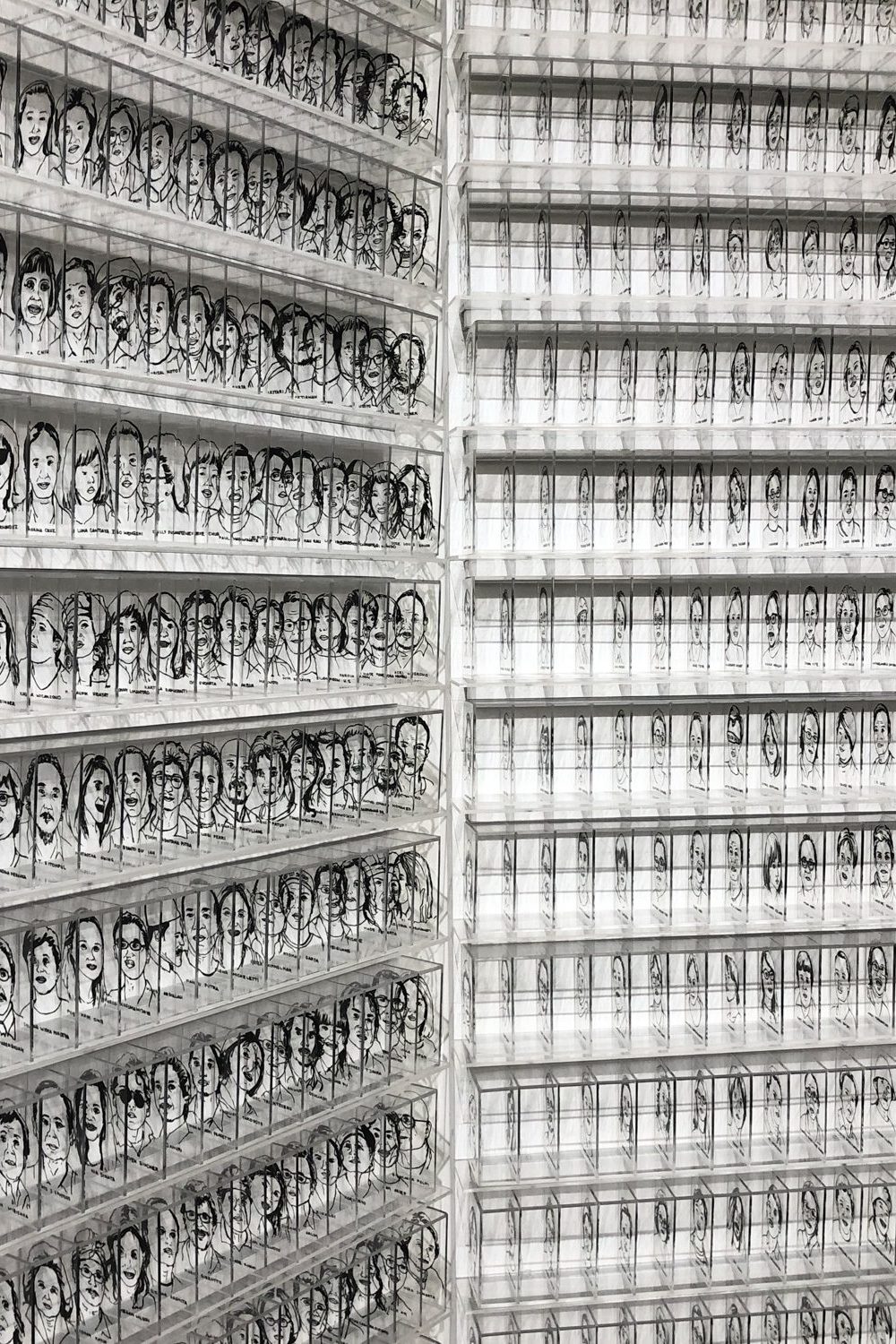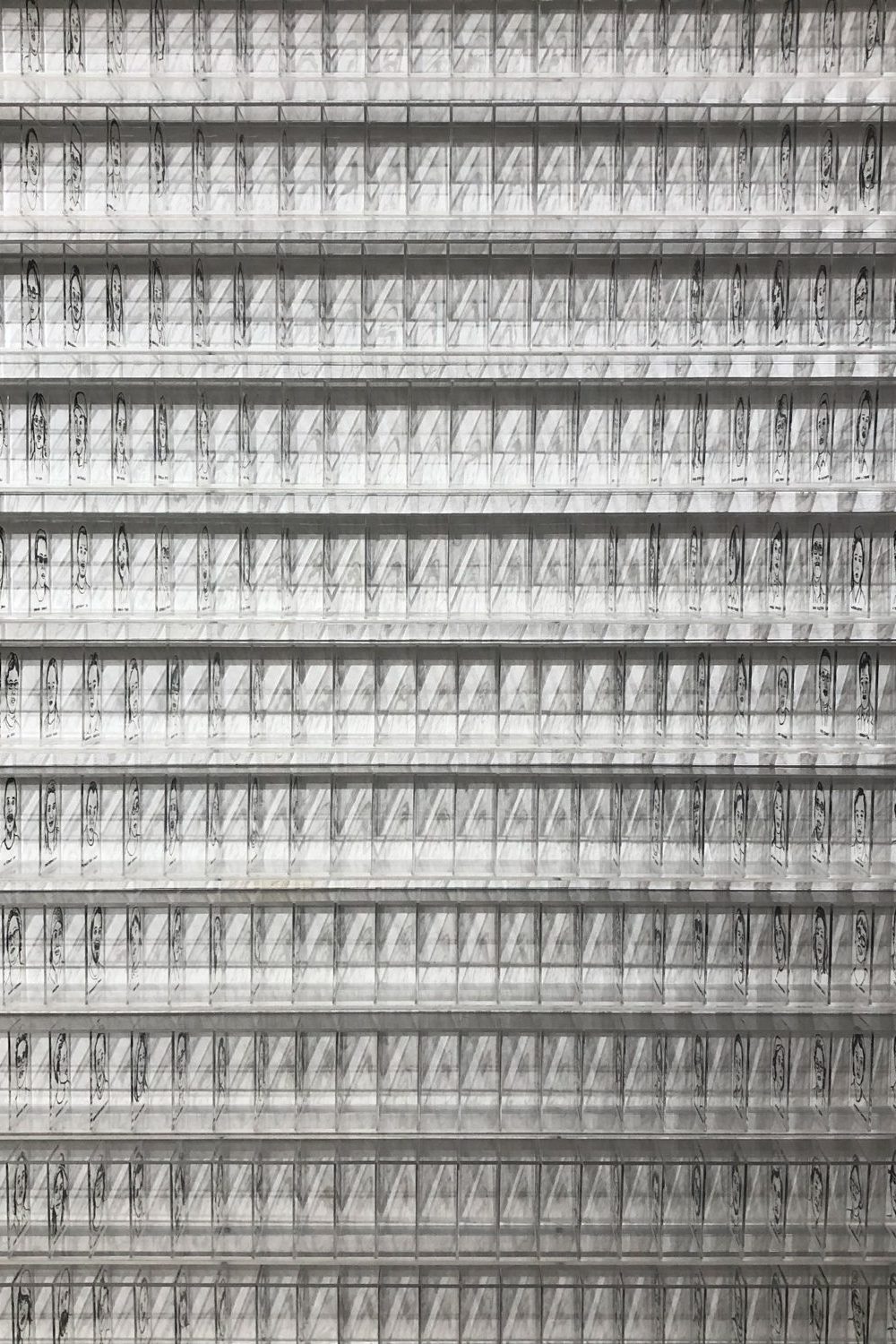A LATEST SOLO EXHIBITION BY ADITYA NOVALI, WHICH QUERIES ABOUT THE PERCEPTION OF REALITY AMIDST THE AGE OF DIGITALIZATION AND THE WAYS THINGS ARE IN THE WORLD THROUGH A GEN-X LENS
TEXT: TUNYAPORN HONGTONG
PHOTO COURTESY OF TUMURUN PRIVATE MUSEUM AND ADITYA NOVALI EXCEPT AS NOTED
(For Thai, press here)
Aditya Novali is typically introduced as an artist with a background in architecture and a puppeteer when he was younger. This brief introduction adequately explains the presence of geometric forms, crisp lines and grids, and casts light and shadows in the physical appearances of his art. In order to comprehend the ideas behind his body of work, however, the previous introduction may not be sufficient. Perhaps the best place to begin is with the generation to which he belongs.

Novali, who was born in 1978, can be considered a young member of Generation X who has witnessed the transition between two very different worlds. Politically, he saw Indonesia under Suharto’s regime up until the period when the country’s political climate and freedom became significantly superior to those of its regional neighbors. He also observed the globalization of the world’s cultures, from the time when news and information were confined to the present, where massive amounts of data bombard users and are disseminated in nanoseconds.
As individuals who have seen the significant transition from a previous era into a more connected world, most members of Generation X seem to be able to adapt to the age of digitized information just as well as Generation Y. Nevertheless, they (if considering my age, the more proper pronoun here should be ‘we’) have spent more than half of their (our) lives in the old world. Having to endure such radical changes, it appears that the majority of Gen Xers do not agree with all current state of the world and are skeptical about some changes. In the case of Novali, these questions have found their way into his art.
In his latest solo exhibition, ‘WHY,’ Novali presents a series of works, many of which query the ways things are in the world. “When I Google AHOK” (2017) is a five-part, LED-illuminated plexiglass installation that shows patterns composed of a plethora of rectangular boxes of varying sizes and colors. In 2016, Indonesia was embroiled in a major political scandal involving the former governor of Jakarta, Basuki Tjahaja Purnama, AKA Ahok, who was being charged for allegedly making an insulting statement about Islam during his election campaign. The volume of information flooding the public domain was overwhelming. When Novali Googled the word ‘Ahok,’ the first images that emerged on the page were a collection of colorful rectangles (these were the processing images of the search results) and pixelated photos of Ahok himself. All were owing to the slow Internet connectivity in Solo, a town in Central Java and the artist’s hometown. “Singaporeans and South Koreans would never comprehend it,” he said with a chuckle. “Their Internet connection would never be that slow.”
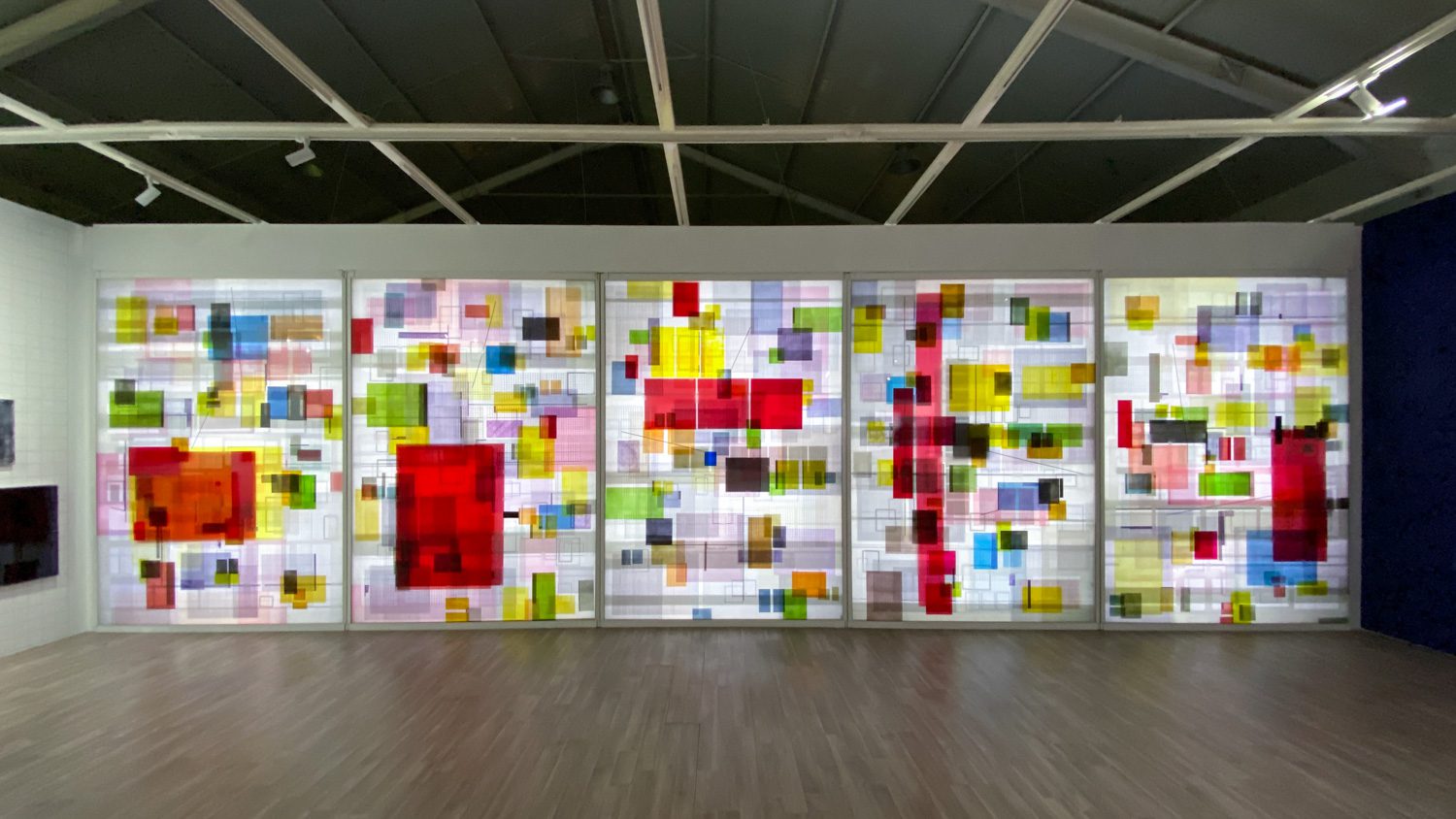
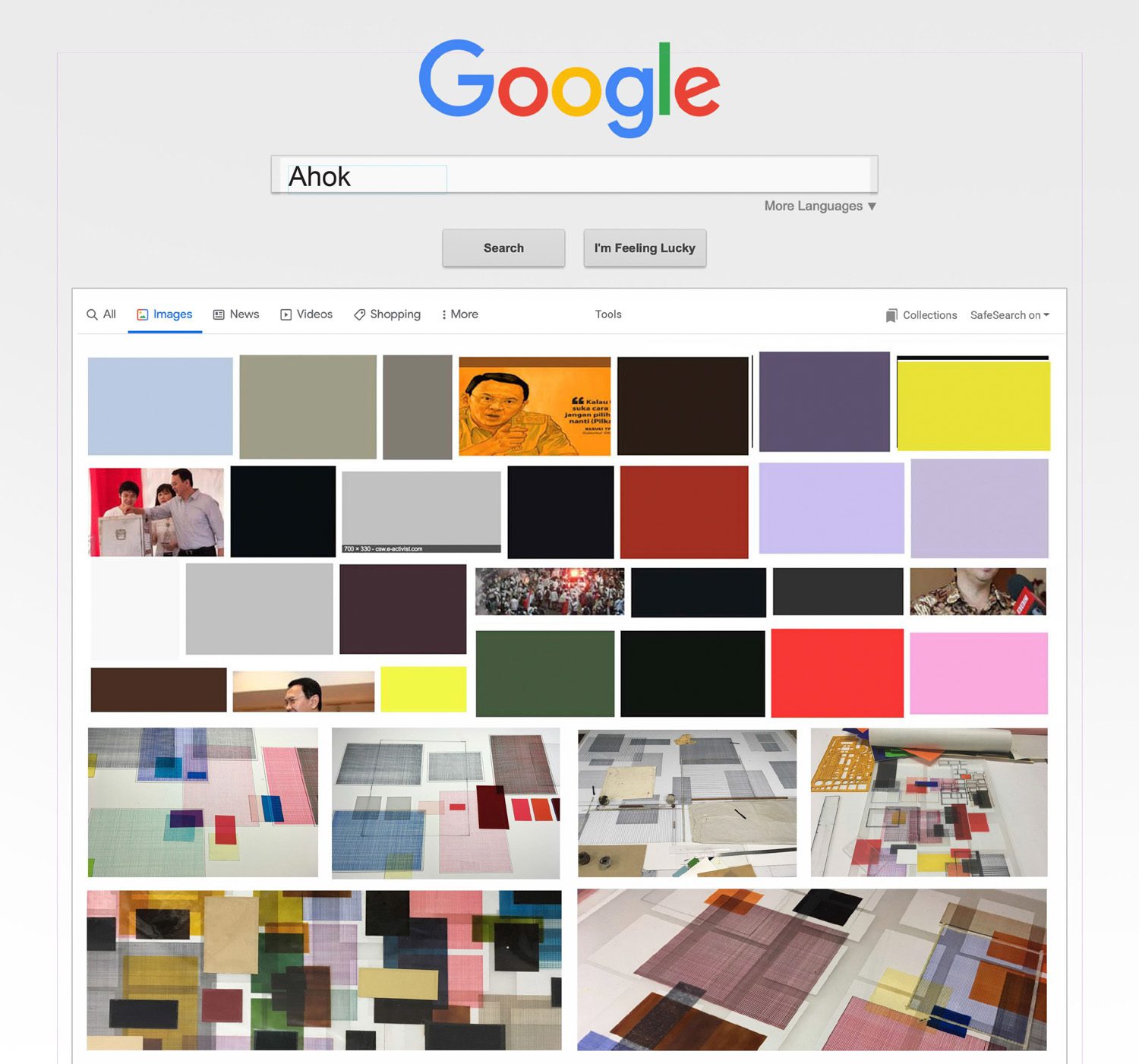
The visuals partially rendered by poor Internet connection inspired Novali’s installation. Rectangular forms of differing sizes and hues are represented the inexhaustible and utterly polarized facts and opinions in the online world, each of which varies according to whether the content was created by a pro- or anti-Ahok source. This raises the next question of how much we can trust the information shared online. Is there any reality in this virtual world?
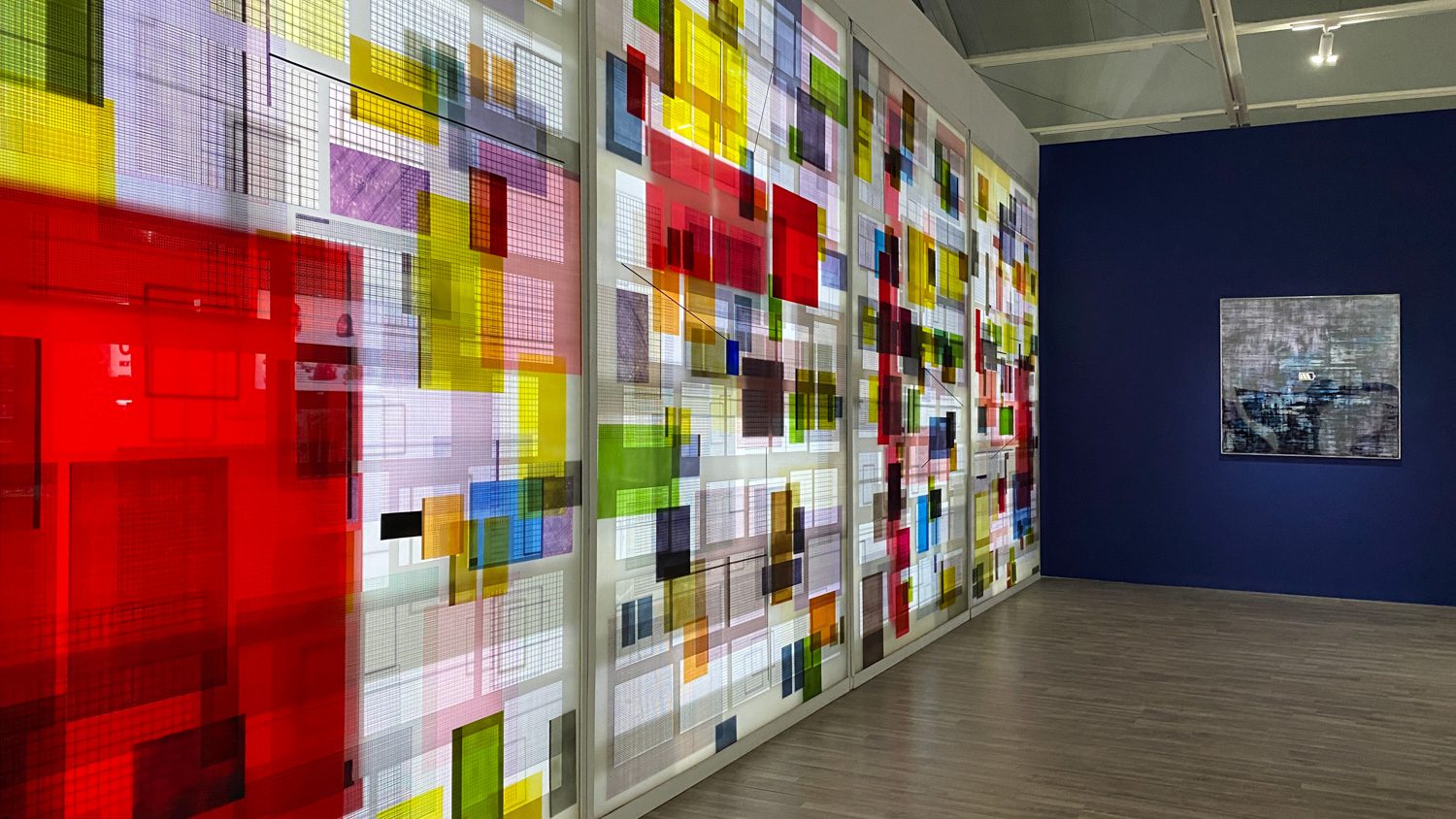
Structures of Representation consists of two artistic mediums that appear to be an integral part of Novali’s artistic identity. The first is a painting which contains 21 rotatable aluminum bars. Each of the four sides of each bar is hand-painted with a different pattern by the artist. Each of the 21 bars would disclose distinct images when turned in a specific direction. With ‘WHY,’ Novali integrates the rotatable painting titled ‘I.N.’ (2019). It’s a landscape painting which one side is made up of geometric forms and the other is painted with a traditional Chinese landscape. Concurrently with his solo exhibition, Novali exhibited another of his rotatable paintings at Art Jakarta (26th-28th August). The artwork portrays a map of Jakarta, the city’s prominent landmarks, such as monuments, as well as drawing of political events, including student and public protests, which occurred between 1965 and 2016. Novali equates the rotation of this artwork to an individual’s selective perception of reality and an attempt to conceal or distort ominous and repulsive historical fragments while displaying palatable imagery. Even when one side of a column is concealed, its existence cannot be denied. “The truth never goes anywhere. The truth is always there,” said Novali.
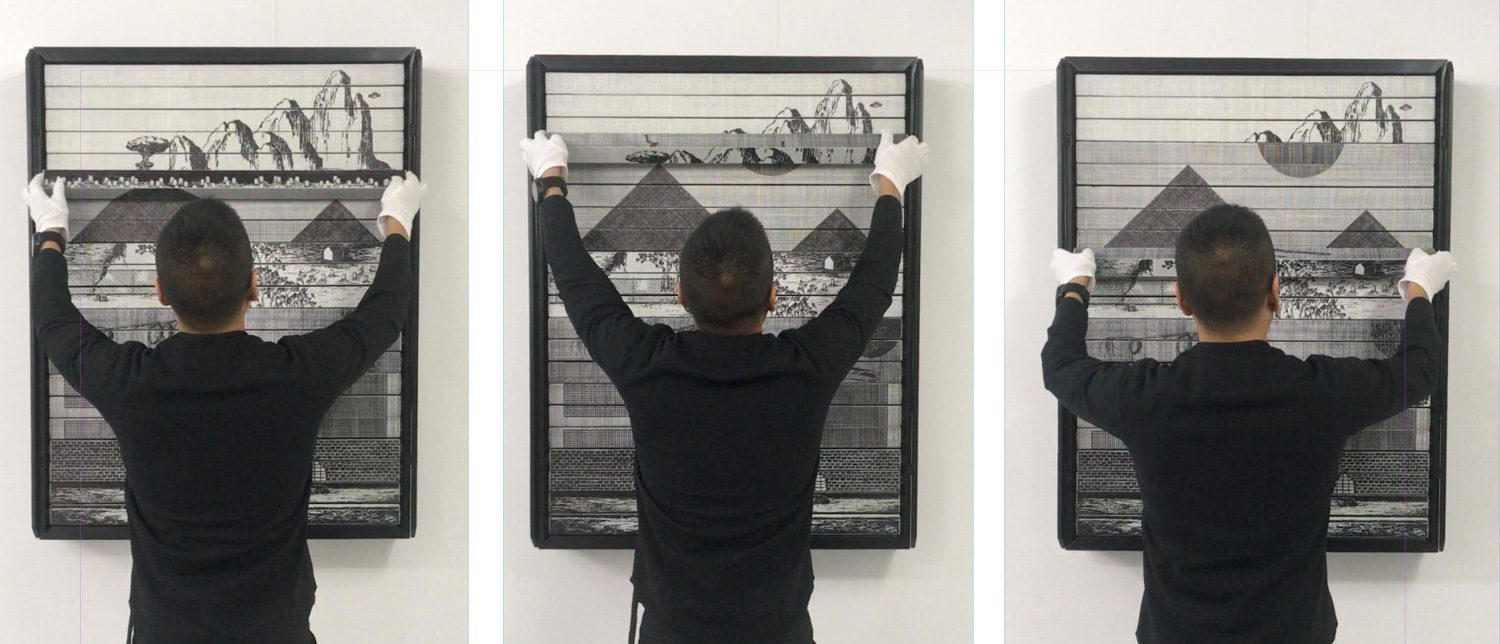
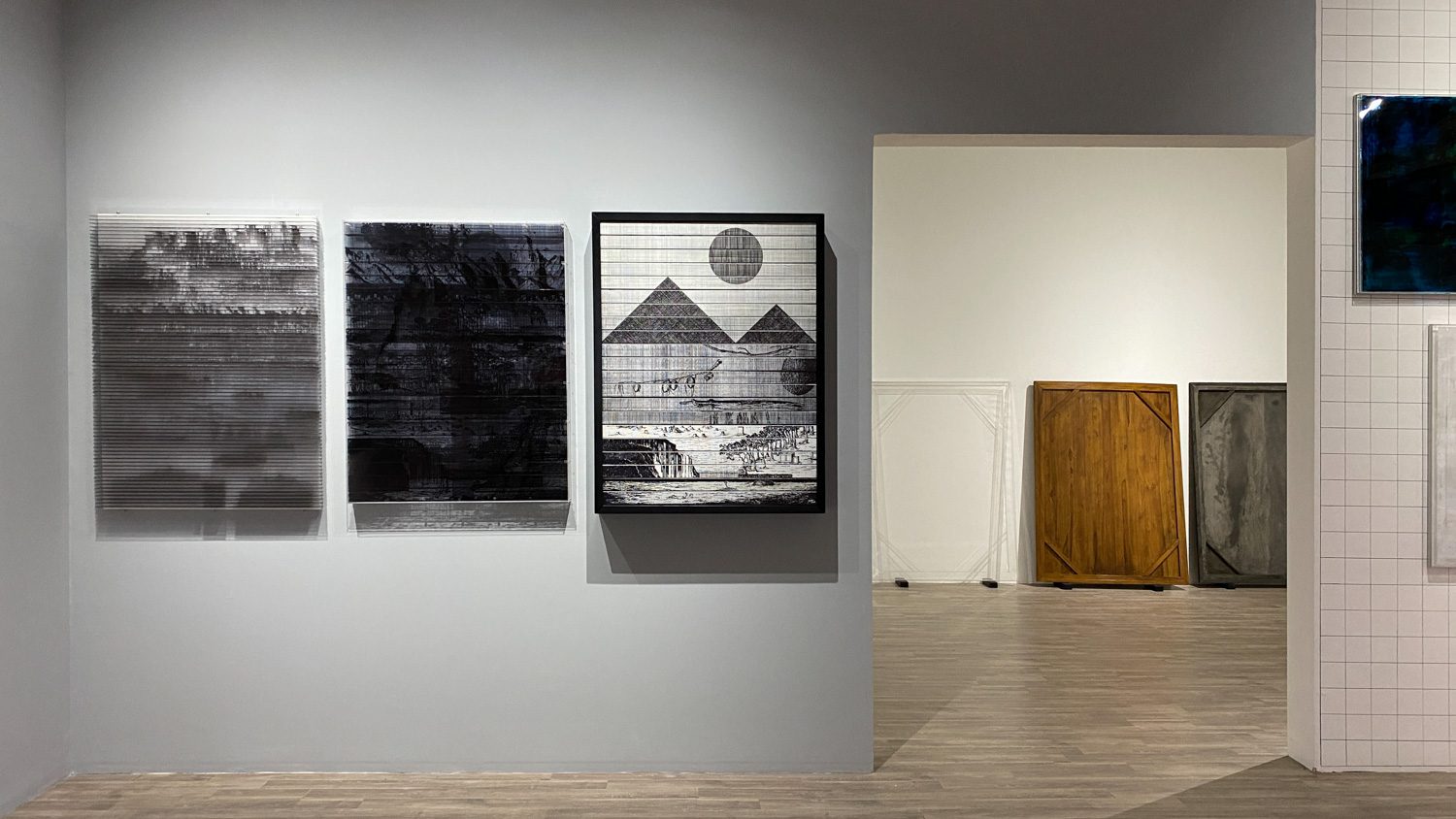
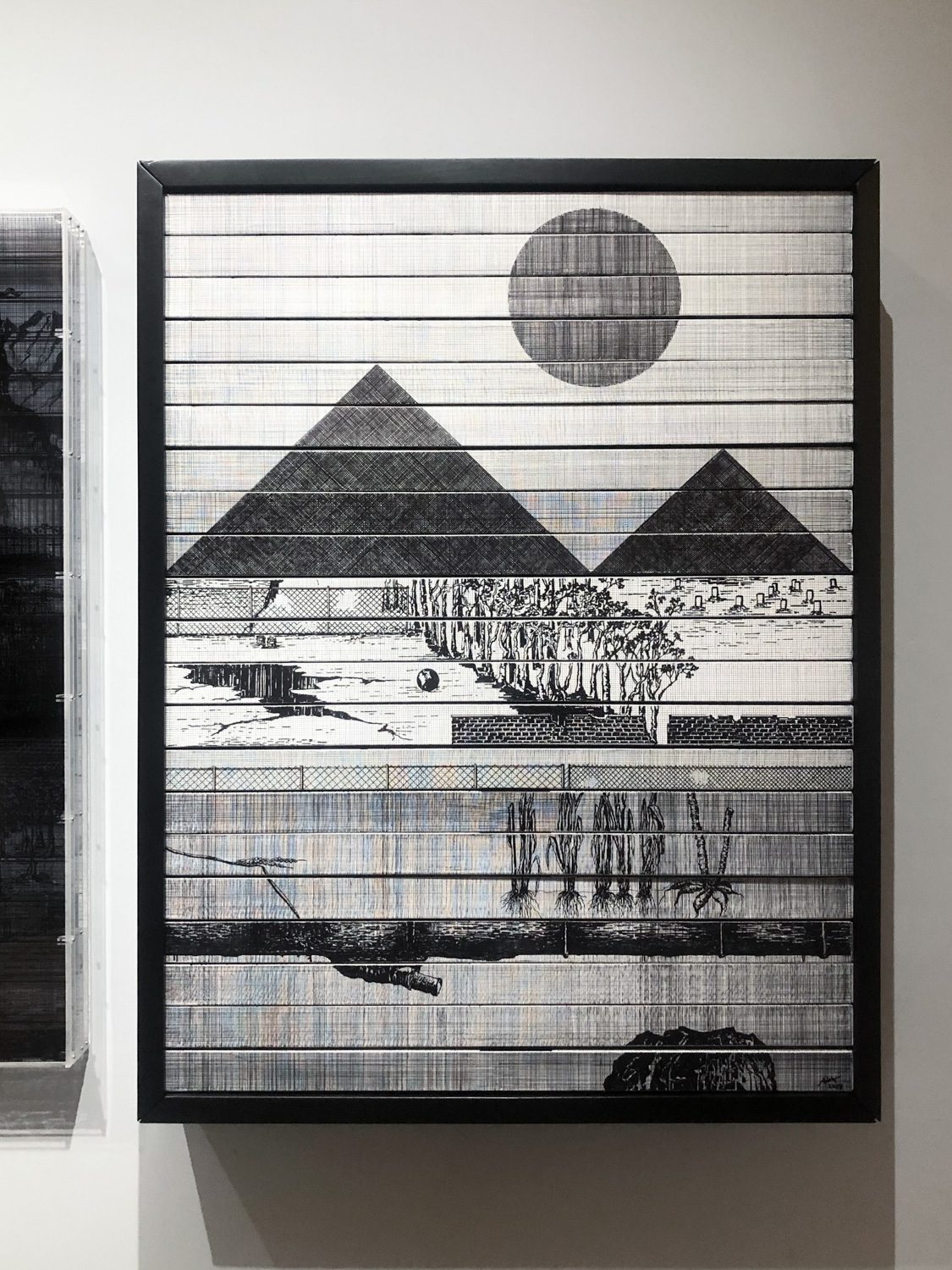
Photo: Tunyaporn Hongtong
The artist paints a landscape similar to what he painted on the rotatable painting on plexiglass, another medium that has become an intrinsic element of his work. The plexiglass pieces are installed to form various structures, ranging from overlaid configurations (‘TH:IS, 2019’) to a superimposed arrangement that contains greater depth (‘SE.NT.EN.CE, 2019’). As a result, the same image is arranged in dissimilar structures, generating distinct images and different details varied by each viewer’s perspectives, from standing in front of or to the side of the artwork.
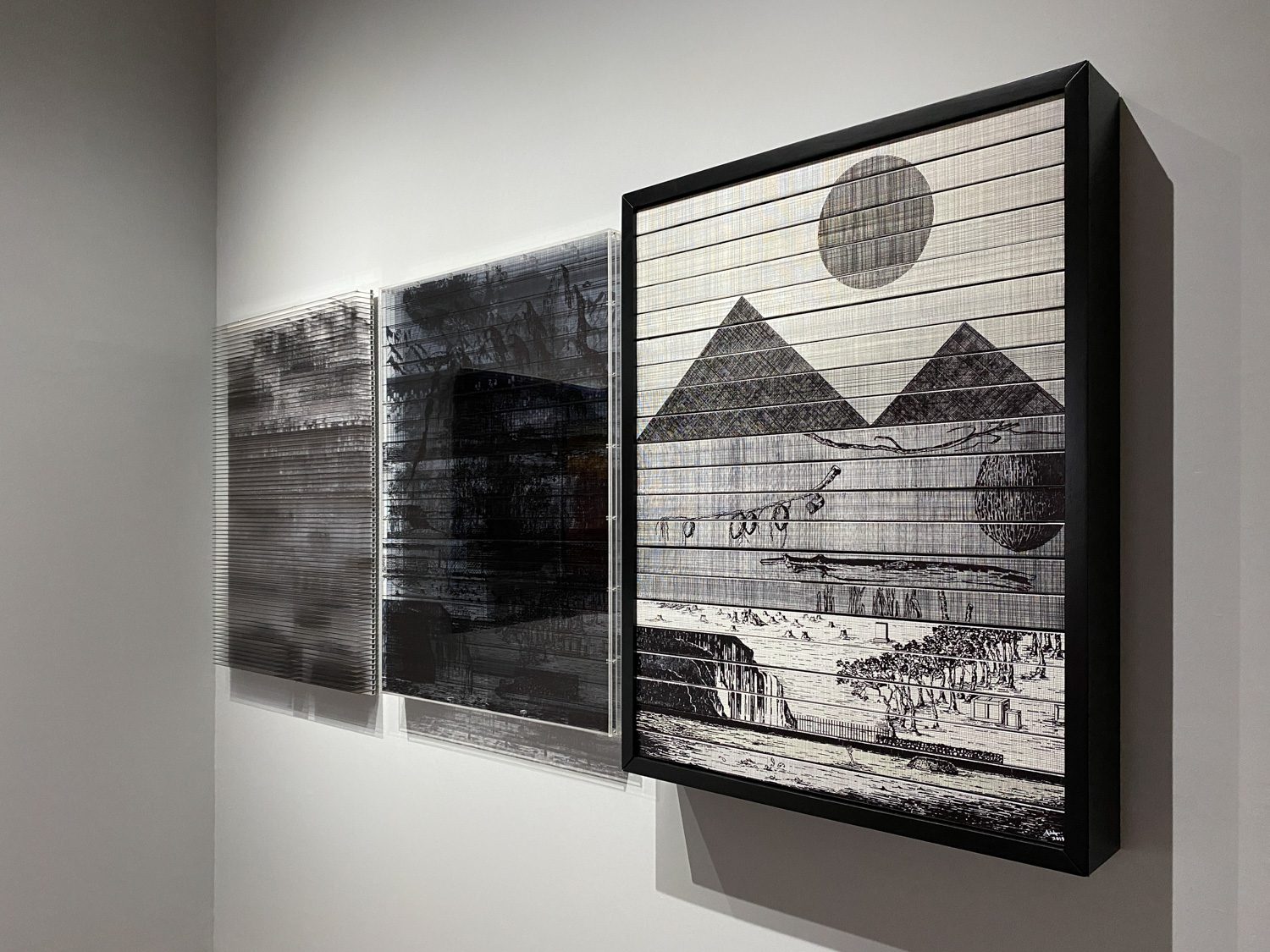

Photo: Tunyaporn Hongtong
With ‘WHY,’ Novali’s drawings find their ways to small pieces of plexiglass ‘ for ‘Conversation Unknown’ (2015). This time around, he painted 3,500 portraits of individuals in Indonesia’s Contemporary art scene who were featured in Dr. Melani Setiawan’s book, “Indonesian Art World.” The portraits are positioned perpendicular to 91 rows of plexiglass shelves in an arrangement that divides the space into different sections. While the artwork can be viewed from an angled perspective, when the piece is looked at from a direct angle, the portraits, which represent each person’s identity, disappear and the shadow, produced in a manner akin to the interacted surface of a building’s facade, becomes visible.
Significant Others: Her and His World(s) is another work I’d like to discuss in this article. The piece, titled ‘Battery icon/card (blue)’ (2018), is a painting of a battery icon on a blue abstract background on plexiglass. By scanning the icon with the Artvive application, the image would convert into many drawings with repeated shapes and forms, similar to those found in other works by Novali. But these drawings were created by his sister with Down syndrome. While Novali did state that the piece touches on social themes, what I find fascinating is how it discloses a facet of his identity: his role as a brother with a younger sister that he must care for. It made me realize that I merely knew him as an artist, much as how social media just reveals one side of a person. But there are many aspects to each of us, and it is up to the person to decide which part of their life they wish to share with the world. So, can we truly see past the exterior that hides a person’s inner self? Perhaps it’s the same way with how Novali conceals a story about his family underneath a painting of a battery icon, waiting for someone to scan it with an application, and discover another layer of his world.

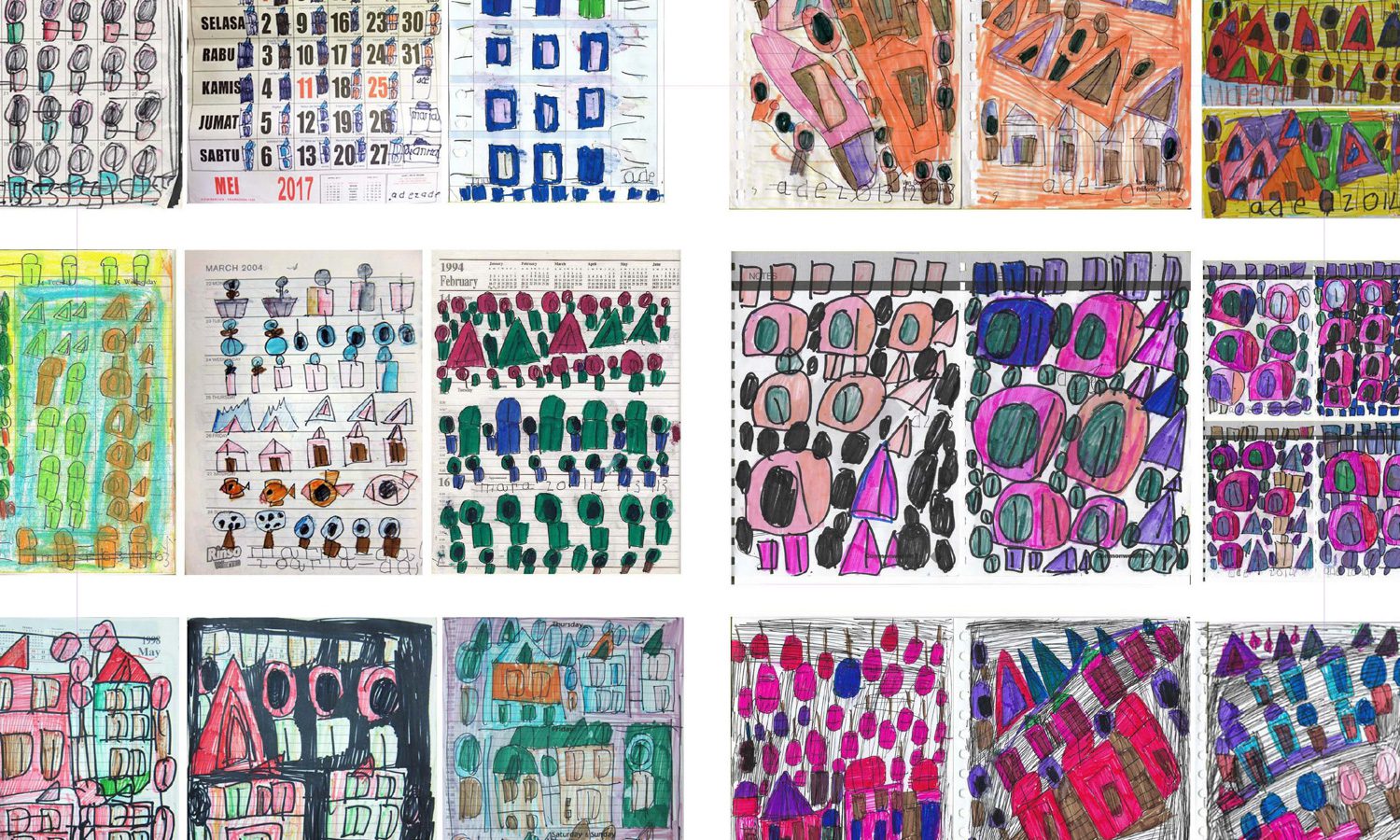
“WHY” recently concluded its run at the Tumurun Private Museum in Solo, Indonesia, in late September. This is Novali’s first solo exhibition in his hometown, following tours and shows in several other countries. Having seen his works a few times at art fairs in Jakarta, this exhibition and its nature as a solo presentation has somehow allowed me to have a greater understanding of his thoughts and mind. It is similar to the experience of reading a book of short stories by a single author, which is far more satisfying than reading a collection of works by multiple writers. Being able to know more about Novali’s body of work, through this solo exhibition, confirms that he is, without a doubt, one of the most intriguing artists in Indonesia.

